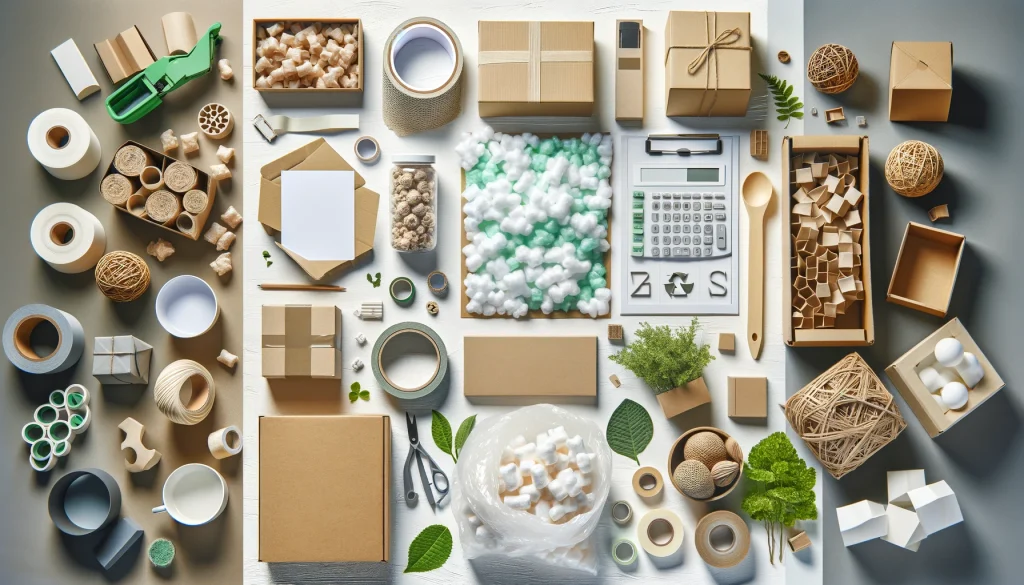In recent years, the global shift towards sustainability has driven significant advancements in eco-friendly packaging materials and technologies. As consumers become increasingly conscious of their environmental impact, businesses are also seeking innovative solutions to reduce their ecological footprint. This blog post explores the latest trends in sustainable packaging and how businesses can leverage these innovations to promote environmental responsibility.
The Rise of Biodegradable and Compostable Materials
One of the most significant trends in sustainable packaging is the development and use of biodegradable and compostable materials. These materials, derived from natural sources such as cornstarch, sugarcane, and potato starch, break down more easily in the environment compared to traditional plastics.
Key Benefits:
- Reduced Pollution: Biodegradable materials decompose naturally, reducing the accumulation of plastic waste in landfills and oceans.
- Lower Carbon Footprint: The production of biodegradable materials typically requires less energy and emits fewer greenhouse gases compared to petroleum-based plastics.
- Versatility: These materials can be used in a variety of applications, from food packaging to shipping materials.
Example: PLA (Polylactic Acid) is a popular biodegradable material used in packaging. It is made from fermented plant starch and is used in products like compostable cups, plates, and food containers.
Recycled Content Packaging
Incorporating recycled content into packaging materials is another effective way businesses can reduce their environmental impact. By reusing materials that would otherwise end up in landfills, companies can conserve natural resources and reduce the energy required to produce new packaging.
Key Benefits:
- Resource Conservation: Using recycled materials helps conserve raw materials such as paper, glass, and aluminum.
- Energy Savings: Recycling typically consumes less energy than producing new materials from scratch.
- Brand Image: Businesses that use recycled content in their packaging can enhance their reputation as environmentally responsible companies.
Example: Many beverage companies now use bottles made from recycled PET (rPET) plastic. This not only reduces the demand for virgin plastic but also promotes the recycling of existing plastic waste.
Edible Packaging
Edible packaging is an exciting innovation that aims to eliminate waste entirely. Made from natural, food-grade ingredients, these packaging solutions can be consumed along with the product they contain.
Key Benefits:
- Zero Waste: Edible packaging reduces waste by providing a package that can be entirely consumed.
- Consumer Appeal: Novel and eco-friendly, edible packaging can attract environmentally conscious consumers.
- Food Safety: These materials are often made from ingredients like seaweed, rice, or potato, which are safe for consumption.
Example: Seaweed-based packaging is gaining traction, especially in the food industry. Companies like Loliware are producing edible straws and cups made from seaweed and other sustainable ingredients.
Plant-Based Plastics
Plant-based plastics, also known as bioplastics, are derived from renewable biological sources rather than fossil fuels. These materials offer a more sustainable alternative to traditional plastics, with the added benefit of being compostable in some cases.
Key Benefits:
- Renewable Resources: Bioplastics are made from plants like corn, sugarcane, and cassava, which are renewable and sustainable.
- Reduced Emissions: The production of plant-based plastics typically results in lower carbon emissions compared to conventional plastics.
- End-of-Life Options: Many bioplastics are designed to be compostable, further reducing their environmental impact.
Example: Coca-Cola’s PlantBottle is made partially from plant-based materials and is fully recyclable. This innovation reduces the carbon footprint of the packaging and supports the use of renewable resources.
Minimalist and Refillable Packaging
Minimalist packaging focuses on reducing the amount of material used, while refillable packaging systems encourage consumers to reuse containers multiple times.
Key Benefits:
- Material Reduction: By designing packaging that uses less material, businesses can decrease their overall environmental impact.
- Consumer Convenience: Refillable packaging offers a convenient and cost-effective solution for consumers who want to reduce waste.
- Long-Term Sustainability: These systems promote a circular economy, where materials are continuously reused rather than discarded.
Example: Brands like Loop and The Body Shop offer refillable packaging systems for products such as shampoo, detergent, and cosmetics. Customers can return empty containers to be refilled, reducing single-use plastic waste.
Smart Packaging Technologies
Smart packaging technologies integrate advanced features such as QR codes, sensors, and RFID tags to improve the functionality and sustainability of packaging.
Key Benefits:
- Waste Reduction: Smart packaging can provide real-time information about product freshness, helping to reduce food waste.
- Supply Chain Efficiency: RFID tags and sensors can track products throughout the supply chain, optimizing logistics and reducing waste.
- Consumer Engagement: QR codes and other interactive features can educate consumers about the sustainability of the packaging and encourage eco-friendly behaviors.
Example: Some food packaging now includes freshness sensors that change color when the contents are no longer safe to consume. This innovation helps consumers avoid unnecessary food waste.
Conclusion
As the demand for sustainable packaging continues to grow, businesses have a unique opportunity to adopt innovative materials and technologies that reduce their environmental footprint. From biodegradable and compostable materials to smart packaging solutions, the latest trends in eco-friendly packaging offer numerous benefits for both the planet and businesses. By embracing these innovations, companies can not only meet consumer expectations but also contribute to a more sustainable future.
Implementing these sustainable packaging solutions requires a commitment to environmental responsibility and a willingness to invest in new technologies. However, the long-term benefits, including cost savings, improved brand image, and a healthier planet, make it a worthwhile endeavor.


